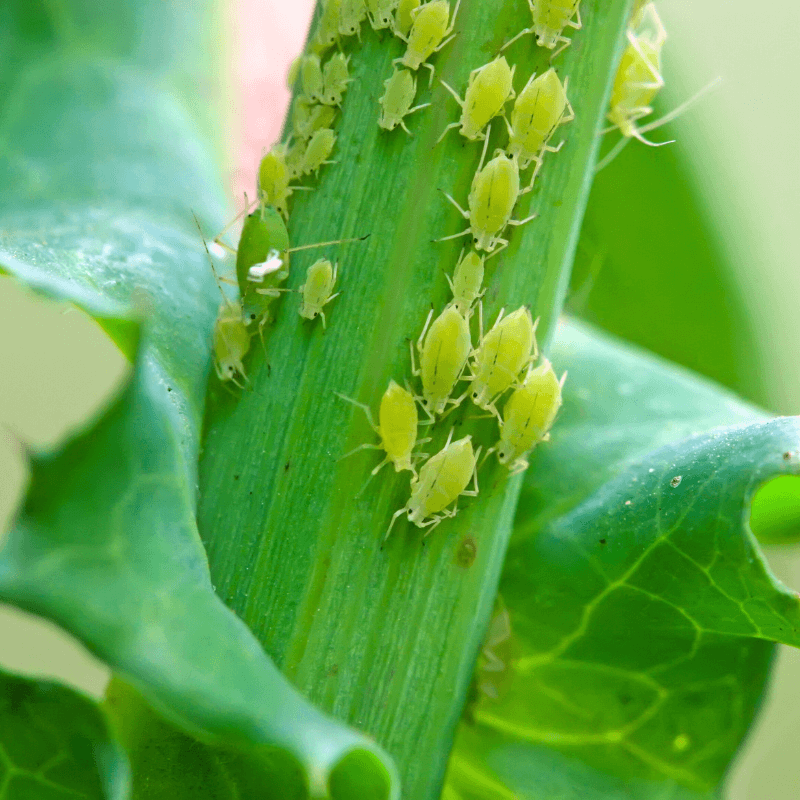Common Garden Pests and How to Banish Them
Have you ever gazed at your garden only to realise your plants look a bit… chewed on? You might have a pest problem…
Here’s how to identify a few common garden pests and banish them for good!
Aphids
Aphids are tiny but can pack a real punch in high numbers. They harm your plants by sucking the sap right out of their leaves, leaving behind a sticky waste substance called honeydew (which can also cause sooty mould). How do you know if you have aphids? You’ll probably need a magnifying glass. They’re often green, black, brown, or pink, have round or conical bodies with spindly legs, and usually hang out in large numbers, speckled across your plant’s leaves. Often, you’ll notice your plant wilting or yellowing before you spot the culprit.
Banishing Tip: Introduce beneficial insects like ladybugs into your garden. Ladybugs have an almost insatiable appetite for aphids, with adults consuming around 25 aphids per day! Ladybugs can be purchased in bulk online or at some plant nurseries. If you’re not keen on bugging out your garden, you can spray some horticultural oil (or neem oil) onto the affected plants for a quick fix. It’s simple, effective, and safe for your greenery.
Slugs and Snails
Slugs and snails are slow-moving slime producers that feast on your plants under the cover of night. They’re especially fond of young, tender plants, leaving behind irregular holes and a trail of their signature, shiny slime. They like to hide out in dark, damp areas during the day, so you’ll likely find them stuck under pot plants and decorative items while the sun is up.
Banishing Tip: You might love your morning cup of joe, but slugs and snails hate coffee. Keep them away by sprinkling used coffee grounds around your plants and garden beds. For an added barrier, crushed eggshells on top of your soil will work wonders. Crushed eggshells are sharp and deter the soft-bodied pests, and, as a bonus, they add calcium to the soil as they decompose.
Caterpillars
Let’s talk about caterpillars. While they eventually turn into beautiful butterflies or moths, they can be quite the nuisance in your garden. Just a few hungry caterpillars can devastate large plants in mere hours. Because they prefer soft foliage, the hallmark of a caterpillar attack is skeletal-looking stems and leaf veins where lush leaves used to be.
Banishing Tip: For a natural solution, encourage birds into your garden. Birds are natural predators of caterpillars and can help keep their population in check. You can also manually remove them by hand (wearing gloves, of course). If you prefer to get chemicals involved, a mild insecticide should do the trick. Just make sure you give all of them the flick; otherwise, you’ll be sorry!
Could you use some help keeping your garden pest-free? Here at Simply Helping, we offer flexible gardening services for people from all walks of life! Click here to learn more and contact us today.




